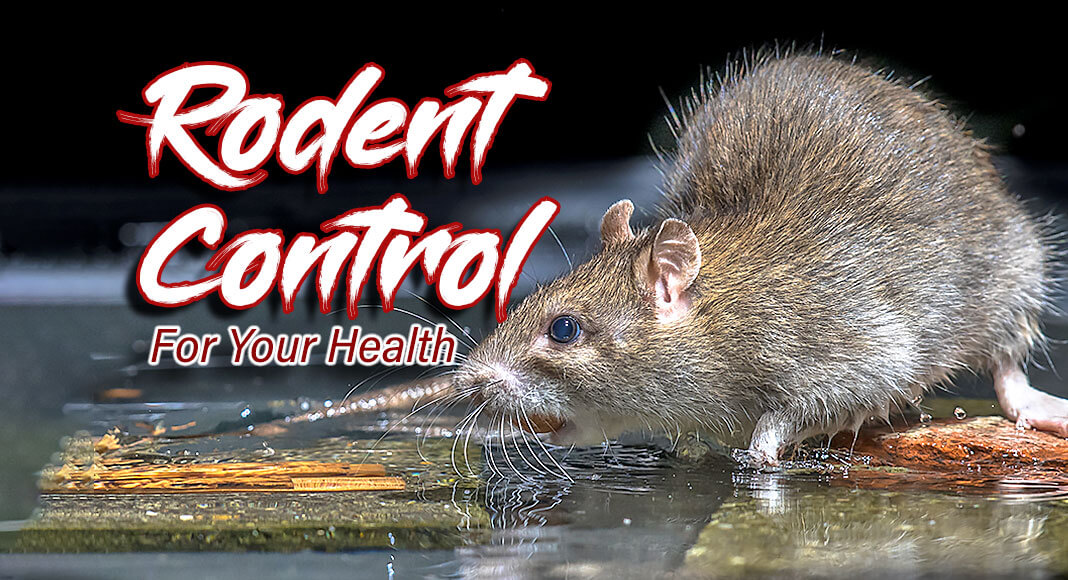
Texas Border Business
Rats and mice are known to carry many diseases. These diseases can spread to people directly, through handling of rodents; contact with rodent feces (poop), urine, or saliva (such as through breathing in air or eating food that is contaminated with rodent waste); or rodent bites. Rodents can also carry ticks, mites, or fleas that can act as vectors to spread diseases between rodents and people. Many diseases do not cause any apparent illness in rodents, so you cannot tell if a rodent is carrying a disease just by looking at it.
Infestation of rodents in and around the home is the main reason disease spreads from rodents to people. The best way to prevent a rodent infestation and contact with rodents is to remove food sources, water, and items that provide shelter for rodents. Learn how to eliminate a rodent infestation, prevent future rodent infestations, and prevent diseases spread by rodents.
Signs that Rodents are Present
The first signs of rodents usually appear before you even see a rat or mouse. Regular inspection of the inside and outside of a home or business is important to identify signs of rodents. It’s easier to control rodents before they have time to become established.
Two classic signs of rodent presence are rodent droppings and gnaw marks.
- Rodent droppings can be found anywhere rodents have accessed but are common in cabinets, drawers, and other areas out of plain sight. Rodent droppings are pointed at one end and often contain hair. It can be challenging to know if there is an active rodent population just by examining droppings. One way to be sure is to safely clean the area. If droppings are present after cleaning, this indicates an active rodent presence.
- Rats and mice gnaw to create better access points and keep their teeth at the proper length. Their teeth leave distinct marks and are a good sign that rodents were active in the area. Gnaw marks alone may only mean that rodents were active in the area at some point. Gnaw marks are often found in the same area as droppings, and the same clean-up techniques can be used to help determine if there is an active rodent presence.
Diseases Spread by Rodents
Rodents, such as rats, mice, and chipmunks are known to carry many diseases. Diseases can spread to people directly and indirectly from rodents. The following list provides links to more information about some of the diseases that can spread from rodents, these are not exhaustive lists.
Diseases spread directly by rodents
Certain diseases can spread from rodents to people through direct contact with infected rodents (for example, breathing in contaminated air, touching contaminated materials and then touching eyes, nose, or mouth, being bitten or scratched by an infected rodent, or eating food contaminated by an infected rodent).
- Hantavirus
- Hantavirus Pulmonary Syndrome
- Hemorrhagic Fever with Renal Syndrome
- Lassa Fever
- Leptospirosis
- Lujo Hemorrhagic Fever
- Lymphocytic Choriomeningitis (LCM)
- Monkeypox
- Omsk Hemorrhagic Fever
- Rat-Bite Fever
- Salmonellosis
- South American Arenaviruses (Argentine hemorrhagic fever, Bolivian hemorrhagic fever, Chapare Hemorrhagic Fever, Sabiá-associated hemorrhagic fever, and Venezuelan hemorrhagic fever)
- Sylvatic Typhus
- Tularemia
Diseases spread indirectly by rodents
Certain diseases can spread from rodents to people through indirect contact. This can occur when people are bitten by ticks, mites, fleas, and mosquitos that have fed on infected rodents. Diseases can also spread to people from rodents through the consumption of an intermediate host (for example, beetles or cockroaches).
- Anaplasmosis
- Angiostrongylus
- Babesiosis
- Borreliosis
- Colorado tick fever
- Cutaneous leishmaniasis
- Flea-borne (Murine) Typhus
- Hymenolepis diminuta
- La Crosse virus
- Lyme disease
- Moniliformis moniliformis
- Plague
- Powassan virus
- Rickettsialpox
- Scrub typhus
- Tick-borne Relapsing Fever
- Tularemia
Resources
Additional Information from CDC
- Vector Control Resources
- Healthy Housing Reference Manual
- Small Mammals
- Rodent Control After a Disaster
- State and Territorial Health Department Websites
- One Health
Technical Resources
- Integrated Pest Management: Conducting Urban Rodent Surveys [PDF – 35 pages]
- Methods for Trapping and Sampling Small Mammals for Virologic Testing [PDF – 51 pages]
- Rodent Exclusion Manual: Mechanical Rodent Proofing Techniques: a training manual for National Park Service Employees (nps.gov) [PDF – 104 pages]
- Keep pests out [PDF – 1 page]
Rodent Prevention Partners
- U.S. Environmental Protection Agency
- National Park Service Office of Public Health
- National Center for Healthy Housing
Information Source: CDC














